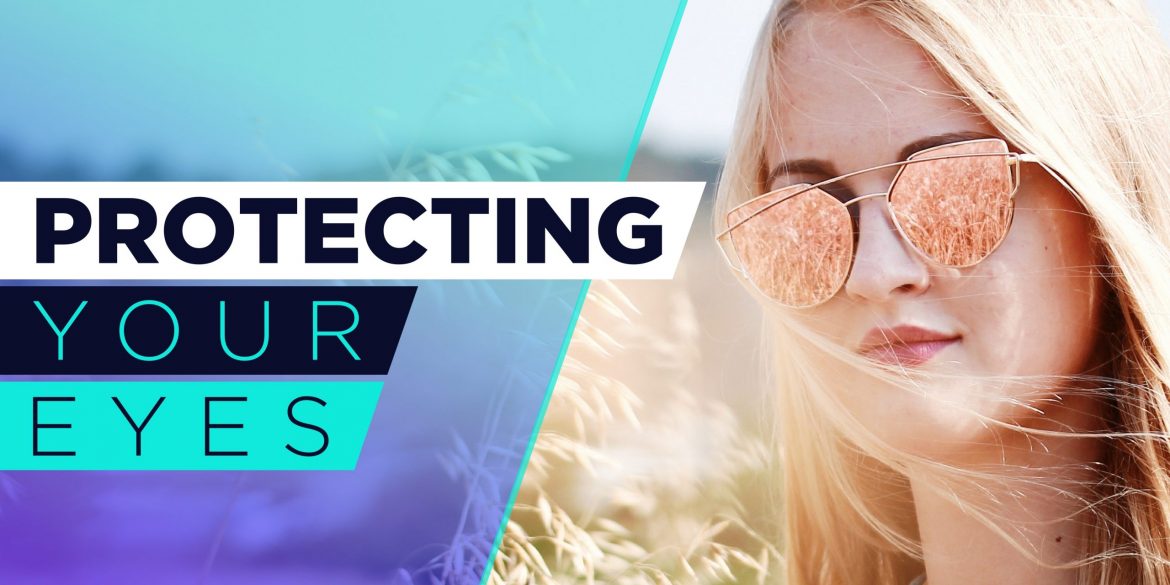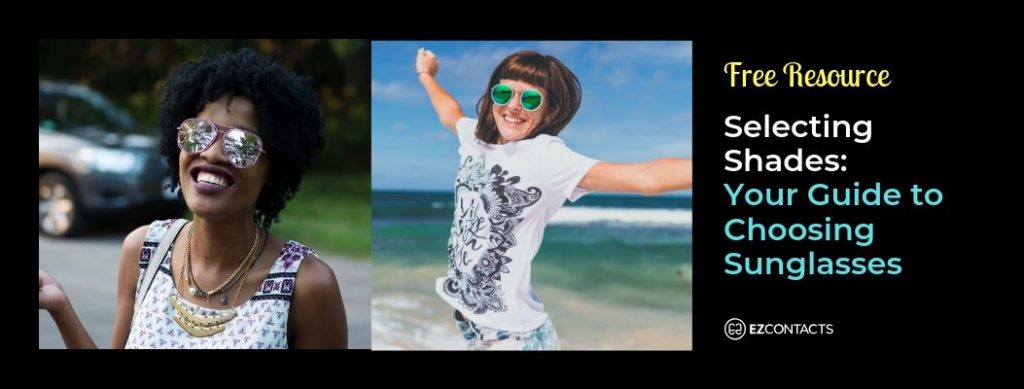![]()
During the warmer months we have an easy time remembering to apply sunscreen or wear protective clothing to prevent sun damage to our skin. But how often are you taking precautions to prevent sun damage to your eyes? Ultraviolet (UV) rays can be just as harmful to your eyes as they can to your skin.
Why is protecting your eyes during summer important?
There are two types of UV rays—UVA and UVB—that can prove harmful to your eyes. UVA rays can cause damage to the retina and the lens of the eye. UVB rays can cause even more damage because they are absorbed by the cornea, the outermost layer of the eye.
Eye issues caused by sun damage
Corneal sunburn
Corneal sunburn, also known as photokeratitis, occurs as a result of intense exposure to UV rays for short amounts of time. It can happen as a result of looking directly at the sun, as with a solar eclipse, but it more commonly occurs when UV rays are reflected off snow, water, sand, or light-colored concrete. Symptoms of corneal sunburn include:
- swelling
- blurriness
- watery eyes
- excessive blinking
- grittiness
- light sensitivity
- temporary blindness
Corneal sunburn can be extremely painful, however, it typically clears up within a couple of days of exposure. In its most extreme form, photokeratitis is known as “snow blindness,” which is found in skiers and those who climb at high altitudes.
Skin cancer
Exposure to UV rays over a prolonged period can cause skin cancer around the eyes. The eyelids, especially are susceptible to basal cell carcinomas, a common form of skin cancer that seldom spreads to other parts of the body.
Cataracts
Cataracts are a clouding of the lens of the eye. They can cause blurry vision, glare, and colors may seem indistinguishable. UVB rays, especially, can be a leading contributor of developing cataracts. On the plus side, cataract surgery is available and can restore your vision back to 100 percent, but to prevent getting cataracts altogether, wear sunglasses any time you feel you have to squint while doing things outdoors.
Macular degeneration
Macular degeneration is the number one cause of vision loss in adults over 50. It causes damage to the center retina, which allows you to see things straight in front of you. Since UVA rays can be especially harmful to the retina, they can be a leading factor in macular degeneration.
Pterygium
Pterygium is also referred to as “surfer’s eye” and is a growth on the conjunctiva of the eye. The conjunctiva are the clear membranes that cover the whites of the eyes, as well as the insides of the eyelids. A pterygium growth will typically start in the inside corner of the eye, closest to the nose, and can spread over the whole surface of the eye. If left untreated, it could impair vision and thus, need to be removed via surgery. Pterygium are common in people who frequently work outdoors in sun and/or dusty conditions.
Pinguecula
Like pterygium, pinguecula is a growth on the eye. Whereas a pterygium is pink, a pinguecula is yellowish in color and can present itself as a bump or a spot on the white of the eye.
Photoconjunctivitis
Another issue that affects the conjunctiva as a result of UV rays is photoconjunctivitis. When the conjunctiva becomes enflamed, usually from exposure to UV rays, photoconjunctivitis can result and, like corneal sunburn, can be very painful.
Cancer
While rare, cancer of the eye can result after repeated and often life-long exposure to the sun.
How to protect your eyes during summer
Below are five ways you can protect your eyes during summer, be it from harmful UV rays or other harsh irritants.
Wear sunglasses
The number one way to protect your eyes from sun damage is to wear sunglasses. But don’t wear just any sunglasses; find a pair of shades with total ultraviolet protection from both UVA and UVB rays. Be sure to wear them on cloudy days, too, as UV rays are present any time it’s light out.
Sunscreen
Many a sunscreen bottle warns to avoid contact with eyes. As a result, most people steer clear of applying sunscreen anywhere near the eyelids, under-eyes, as well as the inside and outside corners. Sensitivity issues can also be a factor, and because these spots are frequently missed, skin cancer can result.
The idea that you can’t put sunscreen around your eyes is a myth. Most sunscreens are, in fact, safe to put on your eyelids. Look for a sunscreen with a mineral formula or one specifically for sensitive skin.
Wear goggles
Chlorinated pool water can really do a number on your eyes. While chlorine’s primary purpose is to keep germs at bay, a harmful by-product tends to come in the form of eye irritation. Be sure to wear goggles every time you take a dip, and that includes in the ocean, lakes, and any other natural body of water, as they can be loaded with pollutants that can cause irritation, too.
Protect against irritants
Summer is a great time to complete those outdoor projects you’ve been putting off all winter. Unfortunately, this means a greater opportunity for harmful irritants to splash back into your eyes. Irritants like soapy water, spray paint, wood stain, and other cleaning solutions can cause chemical burns so always wear protective eye gear when working with toxic substances.
Wear a hat
UV rays can still penetrate the eyes, even if you’re wearing sunglasses. The rays can sneak in through the sides, so a great way to ensure you’re optimally protected is to wear a hat with a wide brim, preferably three inches wide or more.
READY TO SELECT YOUR SUNGLASSES?
Click here or the image below to review our free guide.
Shop designer sunnies on our site (and save)



